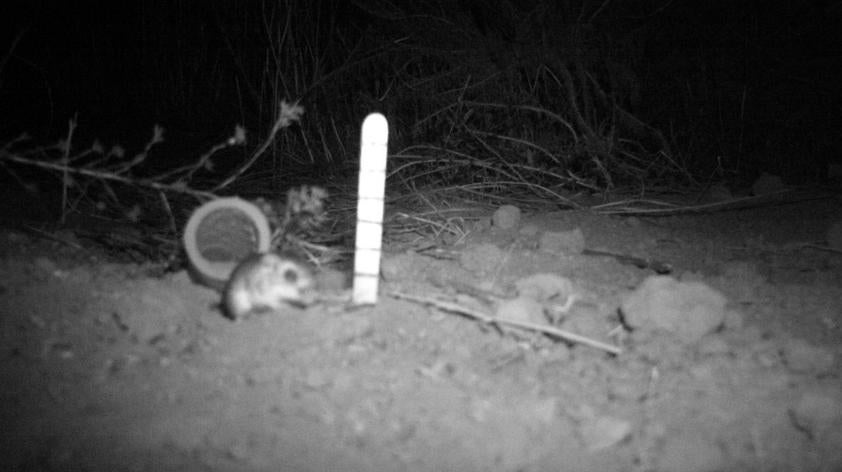
A house for a mouse
The Pacific Pocket Mouse (PPM) is a tiny little critter that has external, fur-lined cheek pockets which are used to transport food and nesting material. Weighing only about 5-7 grams (the weight of 3 pennies), PPM are the smallest mouse species in North America.
Sadly, human development and habitat destruction has left us with only three populations. A fourth population is in the process of being established through a collaborative reintroduction effort that has been releasing, and monitoring captive-born PPM since 2016.
This year, we reintroduced 29 PPM from the PPM Conservation Breeding Facility to Laguna Coast Wilderness Park. To help the PPM adjust to their new surroundings we create a temporary shelter, with underground and aboveground components. This helps the PPM acclimate to their new environment without the pressure of predation and competition. The temporary shelter also helps protect the mice from abiotic factors such as temperature and rain.
This approach has proven effective with other small rodents. The underground portion consists of a nest chamber and 2 artificial burrows that serve as the entrances/exits, both made from biodegradable material. The nest chamber is used as both their food storage area and their sleeping area which always makes me think of a little dragon guarding its pile of gold. Before the mice are placed in their temporary shelter we provide each burrow with nesting material and a treasure trove of seed. The acclimation phase lasts 7 days and during this time one burrow is capped off, and the other leads to the enclosed area above ground, perfect for sand bathing, gathering seeds, and moving around soil. During this acclimation period, the PPM also get to meet their new neighbors that are always very curious about the newcomers.
We have used trail cameras to help us monitor the PPM population since our first release in 2016. This year we wanted to focus on how long the PPM were using their human constructed homes. We did this by placing trail cameras at the entrance of 15 temporary shelters and monitored activity throughout the year after release. The photos were transferred to a computer and examined every two weeks.
Throughout the year we saw many interesting things on the cameras such as mouse altercations, larger rodents trying to squeeze their fat bodies into the pocket mouse-sized entrance to the temporary shelter, and a lot of super cute small mammals and birds.
During our last scan of photos for October (PPM become mostly dormant during the cold months), we found that there were still 13 burrows where PPM were detected near the entrance of these human-constructed homes. Through these observations we have learned that our human-built homes are meeting the PPMs needs, and that they may not be as temporary as we thought.
The mice are remaining in the temporary shelters for many months and, rather than risking building new burrow systems, they are serving as a starter home for many mice that they can expand and adapt as the material biodegrades.
Photo above: Trail camera image showing a PPM right outside of the entrance to the artificial burrow portion of an acclimation shelter. The stick next to the mouse helps provide a reference for the size of the animal in the photo.













